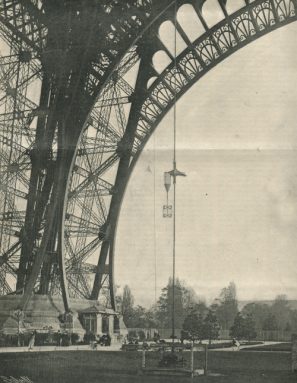Science saved the Eiffel Tower! 🧑🔬
- Lauren Lewis

- Mar 20, 2023
- 2 min read
At the very heart of Paris, the Eiffel Tower stands at 330 metres tall. But did you know that science saved the tower from destruction?
Before construction even began in 1887, it's designer and chief engineer, Gustave Eiffel, knew that its existence would be short-lived. The Paris city council only approved the project under the condition that it would stand for no longer than twenty years! Therefore, from day one, Eiffel sought practical uses for the tower to justify its existence, and extend its life.
Source - Tour Eiffel
On realising that science could be the answer, he set about turning the tower into an observatory for astronomical and meteorological observations. Eiffel also installed a myriad of scientific apparatus, allowing the tower to be used as an experimental laboratory to measure the nature of gravity, wind, lightning, pressure, and even the rotation of the Earth.
Left, middle, and right: Source - Tour Eiffel
But ultimately, it was wireless broadcasting that saved the tower from the chopping block. At the end of the 19th century, the science of wireless telegraphy was new, untested, and unproven. Gustav saw the tower's potential as a giant antenna and secured its place in history by using it to send signals across the channel in 1899, marking the first time ever that this had been achieved. The tower went on to become a vital transmitter and receiver during the first world war, intercepting enemy telegrams, exposing spies, and allowing successful counterattacks against the German advance.
Left: P. Boyer, Public domain, via Wikimedia Commons. Right: source - historical films
After the war, the tower began to broadcast radio programmes in 1921, and television shows in 1935. Today, the tower's 180 antennas broadcast 32 radio and 30 TV channels. Thus, securing the tower's place firmly in Paris' skyline.
Anthony DELANOIX, Unsplash
For image credits, please see the image credits tab
















Comments